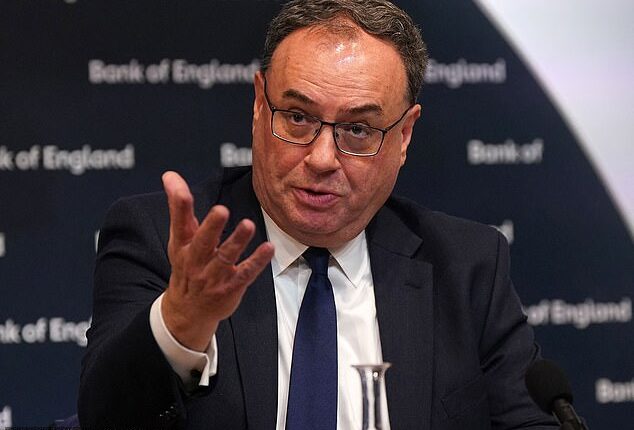
The Bank of England yesterday became the latest central bank to defy fears of global financial sector turmoil by pressing ahead with a quarter-point interest rate hike.
And Bank governor Andrew Bailey rejected parallels with the previous crisis that wrecked the global economy 15 years ago, saying: ‘I don’t think it’s a repeat of 2008 at all.’
The rise to 4.25 per cent was the 11th rate increase in a row as the Bank battles the cost of living squeeze caused by spiralling prices.


Pressure: Bank of England Governor Andrew Bailey (pictured) rejected parallels between the current chaos and the crisis that wrecked the global economy 15 years ago
It came a day after figures showing inflation unexpectedly rose to 10.4 per cent in February.
Speculation had been building that rate-setters in the UK and around the world might think twice about further rises after the demise of Credit Suisse as well as a series of smaller US lenders.
It is the biggest crisis for the sector since the 2008 crash and the fear is that more rate increases could inflict further stress on the banks.
Yet the Bank of England, like the US Federal Reserve a day earlier and the European Central Bank a week ago, have all decided to press ahead.
The Swiss National Bank – at the crucible of the crisis after overseeing Credit Suisse’s emergency takeover by UBS – also yesterday raised rates, by half a percentage point.
In London, the Bank’s rate-setting monetary policy committee (MPC) said it had been briefed by financial stability officials at Threadneedle Street on the turmoil and that ‘the UK banking system remains resilient’.


The MPC said it would ‘continue to monitor any effects on the credit conditions faced by households and businesses and hence the impact on the macroeconomic and inflation outlook’.
It said it would make a ‘full assessment’ of the impact of the turmoil at the time of its next meeting in May – when the Bank will publish its next quarterly monetary policy report.
Bailey acknowledged ‘people are worried about the cost of living’ and ‘may also be worried about what they have been hearing about banks’.
But rejecting any comparison with 2008, he said: ‘I’m confident that the banks in this country are in a much stronger position.’
The Bank also revealed improved economic forecasts, pencilling a return to growth in the second quarter of this year after a first quarter of contraction.
That would mean no immediate recession, which is defined as two quarters in a row of the economy shrinking. In last month’s monetary policy report, the Bank had been predicting a five-quarter downturn. The latest update did not provide any figures for the last two quarters of 2023.
On Wednesday, the Fed’s quarter-point rise – as it battles to bring down inflation at 6 per cent – came with a suggestion that it might be ready to pause its own aggressive sequence of increases.
Last week the European Central Bank (ECB) pressed ahead with a half-point interest rate rise.
ECB chief Christine Lagarde insisted there could be no ‘trade off’ between the rate hikes needed to bring down inflation – still at 8.5 per cent in the eurozone – and financial stability.
Some economists think the Bank of England might have already reached the end of its rate increases, but Bailey said: ‘We don’t know whether it’s going to be the peak.
‘What I can tell you is that we’ve seen signs of inflation really peaking now. But it’s far too high. We need to see it starting to come down progressively and get back to target.’









